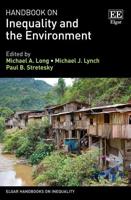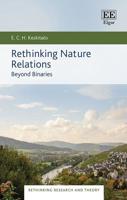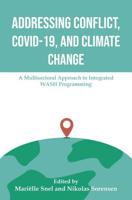Publisher's Synopsis
Pine Barrens: Ecosystem and Landscape focuses on the relationship between the ecological and landscape aspects of Pine Barrens of New Jersey. The idea in this book is based from the discussions of Rutgers University botanists and ecologists at the 1975 American Institute of Biological Science meetings, and from the interest generated by the 1976 annual New Jersey Academy of Science meeting, which focuses on the Pine Barrens.
This seven-part book starts with a short discussion on location and boundaries of the New Jersey Pine Barrens. Part I covers human activities, from Indian activities and initial European perceptions of the land, including settlement, lumbering, fuel wood and charcoal, iron and glassworks, farming and livestock, and real estate development. The next part of the book describes sandy deposits, geographic distribution of geologic formations, and soil types with their ecologically important characteristics. Topics on hydrology, aquatic ecosystems, and climatic and microclimatic conditions are presented in the third part of this reference. Part IV traces the history of vegetation starting before the Ice Age and analyzes vegetation using different approaches, such as community types, community classification according to a European method, and gradient analysis. Plants of the Pine Barrens are briefly described and listed in Part V. The final part illustrates community relationships of mammals, birds, reptiles, amphibians, fish, arthropods, and soil microcommunities. The book is ideal for ecologists, botanists, geologists, soil scientists, zoologists, hydrologists, limnologists, engineers, and scientists, as well as planners, decision-makers, and managers who may largely determine the future of a region.
This seven-part book starts with a short discussion on location and boundaries of the New Jersey Pine Barrens. Part I covers human activities, from Indian activities and initial European perceptions of the land, including settlement, lumbering, fuel wood and charcoal, iron and glassworks, farming and livestock, and real estate development. The next part of the book describes sandy deposits, geographic distribution of geologic formations, and soil types with their ecologically important characteristics. Topics on hydrology, aquatic ecosystems, and climatic and microclimatic conditions are presented in the third part of this reference. Part IV traces the history of vegetation starting before the Ice Age and analyzes vegetation using different approaches, such as community types, community classification according to a European method, and gradient analysis. Plants of the Pine Barrens are briefly described and listed in Part V. The final part illustrates community relationships of mammals, birds, reptiles, amphibians, fish, arthropods, and soil microcommunities. The book is ideal for ecologists, botanists, geologists, soil scientists, zoologists, hydrologists, limnologists, engineers, and scientists, as well as planners, decision-makers, and managers who may largely determine the future of a region.










